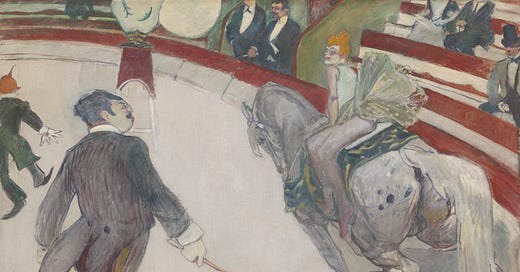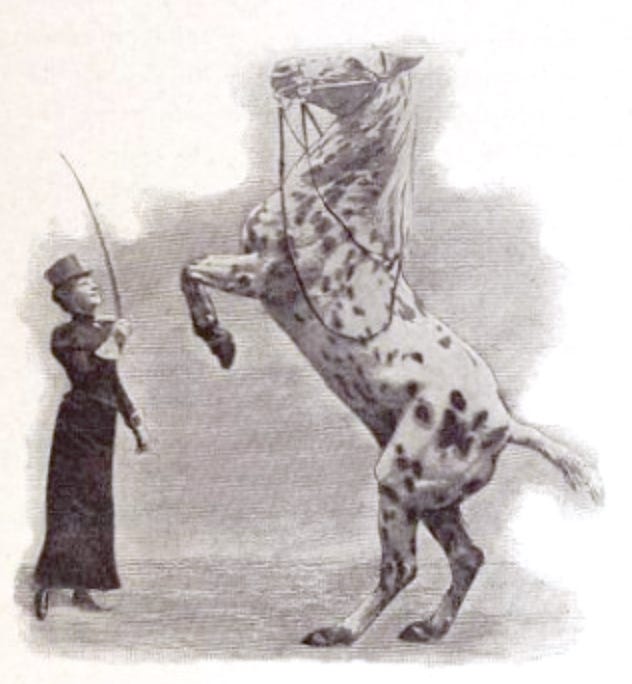Princess Daredevils and Circus Queens
Thanks to Susanna Forrest's on-going research and writing, we finally get a glimpse into the écuyères of the Belle Époque and their legacy.
Every once in a while, a book about horses inevitably enters into my reading rotation. Having just finished Keith McNally’s biography (really pretty good and quite heartbreaking), I thought that it might be nice to move onto somewhat of a lighter subject. I forgot I had this on my bookshelf—I must have bought it on one of my rabbit-hole-turned-Amazon-binges. I’m really excited to dig into it.
But today’s newsletter is about another project the author, Susanna Forrest, has in the works. In another interview we did last week with writer and wild horse aficionado Julia Juster that will surface in the coming weeks, one of the first references she mentioned was Forrest’s current project, called Amazons of Paris. Well, isn’t that enough of an exhilarating title in itself?
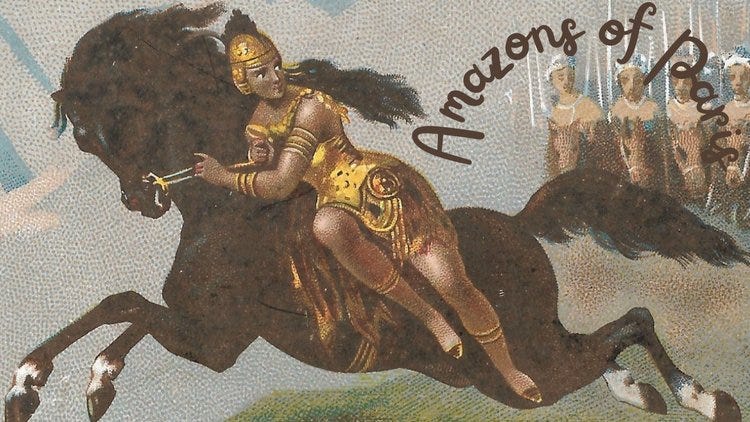
Forrest has already published a series of essays in The Paris Review that profiles a number of these daredevil women—”enigmatic Belle Epoque horsewoman… who were artistes, survivors, and scapegoats of the nineteenth century.”
Horses were the medium that gave the circus, and the Paris circus especially, its tricky, fluid quality. The horse dominated Western society—from royalty to the poor, all encountered and worked with horses on a daily basis. Horses were working class—the brewery drays, the delivery vanners, the nags who pulled the omnibus and tram—but they were also aristocratic and bourgeois—the king’s favorite charger, the lady’s mount, the racehorse. In the horse and at the circus, all classes met.
The depth of Forrest’s research is formidable, as she weaves through cultural artifacts of the era—books, poems, essays, art, library archives—searching for and piecing together the stories of these women. Lucky for those interested in her process, she also has a free Substack where she publishes certain corners of her findings as she continues to work on the book. All I can say is, where is the pre-order button?!
In the meantime, each of her The Paris Review articles are worth a read, linked here.
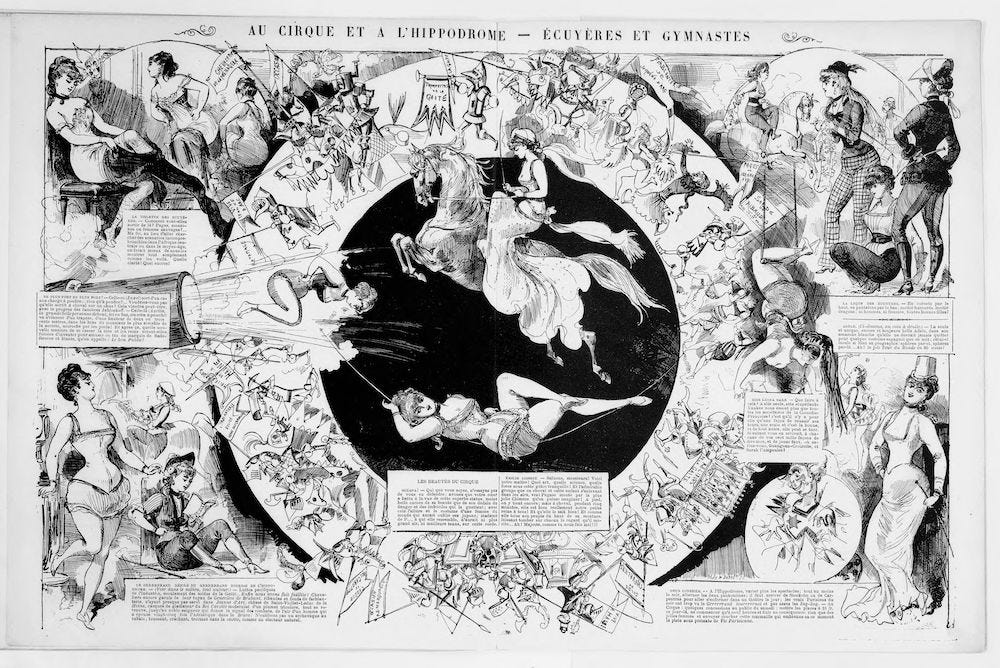
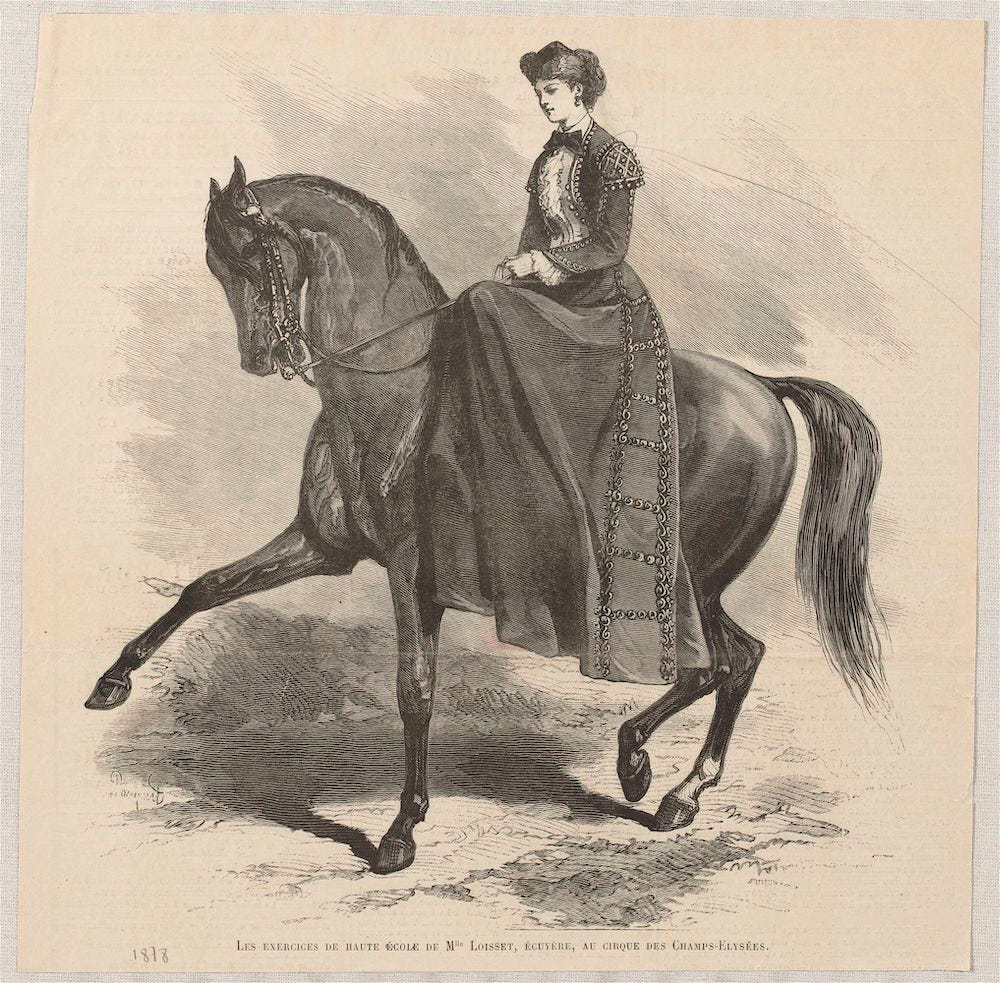
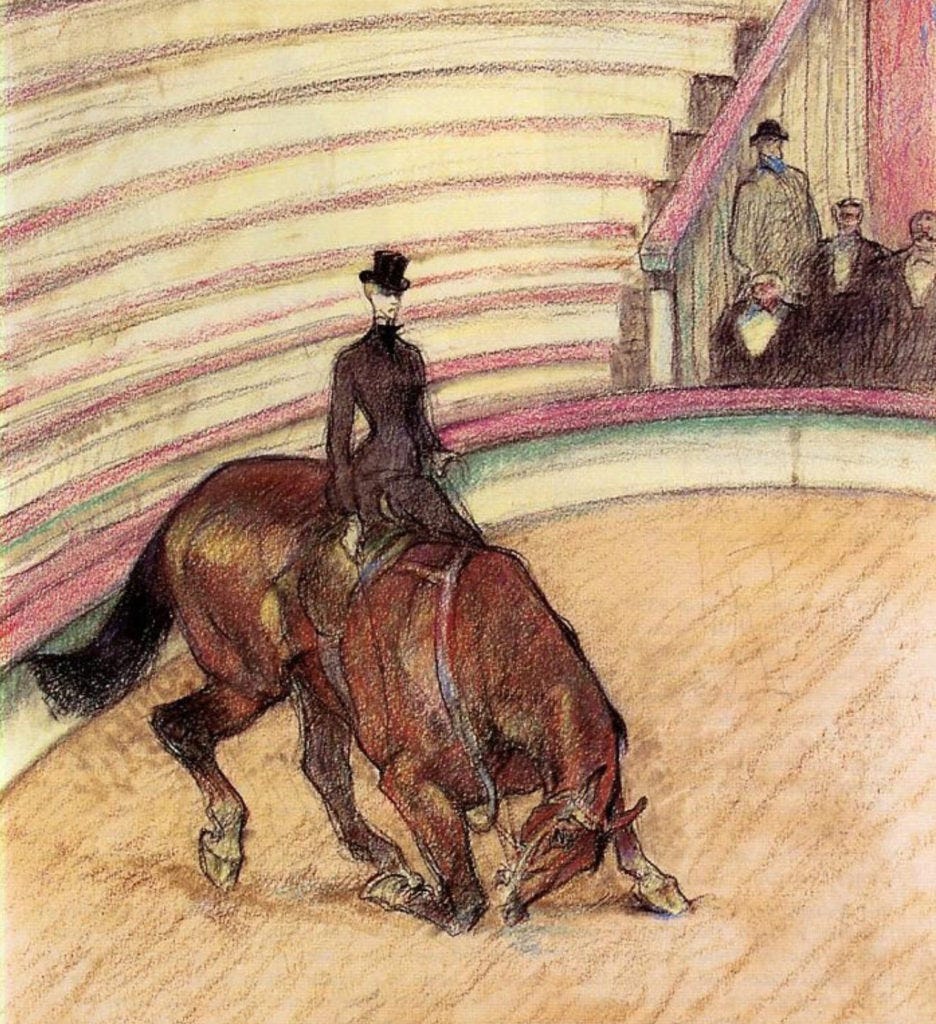
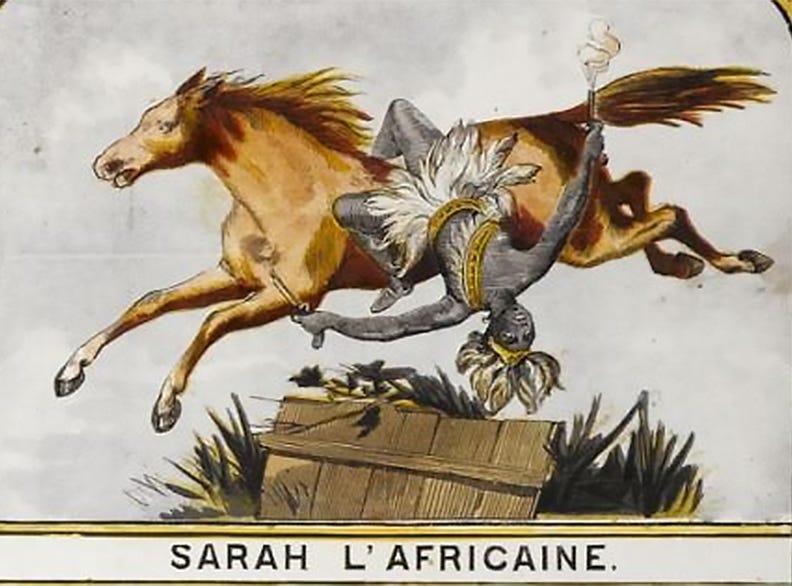
Today, the echoes of the spirit of each of these écuyères live on in a different but equally exhilarating corner of equestrian performance: trick riding and vaulting.
Vaulting can trace its roots all the way back to ancient Rome, as a way for cavalry to train for battle, and this practice carried all the way to the 18th century. By the 19th century, vaulting began to evolve from practical training into mainly for entertainment. These acts became flashier, faster, and more daring, using similar foundational skills but with a focus on wow-factor—as performed by our Belle Époque horsewomen but finding a different interpretation with modern-day vaulters.
About ten years ago, this video We Vault circulated on the once-LVMH-owned NOWNESS and follows a group of vaulters practicing their craft. It’s beautifully shot, and I was thrilled that this tiny piece of horse culture was being brought forth in such a way. Less daredevil and thrill seeking, more poetry, art, and elegance. Literally—the narration is from a text penned by American author Laura Albert, infamously also known as JT Leroy and their bodysuits are designed by Anthony Vaccarello, currently the creative director of YSL.
Trick riding, on the other hand, began in the Russian and Cossack military traditions, then found its way into modern day circuses—American rodeos and Wild West shows. It’s a style of riding where the rider performs acrobatic feats—vaulting on and off a galloping horse, standing upright at a full run, hanging sideways in impossibly balanced positions. It’s fast, physical, and completely captivating.
Bella De Costa is one of today’s trick riding stars. She grew up in a small town in California, obsessed with horses and gymnastics in equal measure. As a teenager, she stumbled across a video of a trick rider performing a tail drag—hanging off the back of a running horse, just inches from the ground—and was hooked.
She started training at local rodeos and eventually apprenticed under a retired stunt rider who had worked in film. Now, she performs across the U.S., combining her own choreography with traditional vaults like the shoulder stand and the—appropriately named—suicide drag. But above all, the relationship she has with her horses is paramount.
The trust that I have with my horses is so strong that I have no fear when I do anything. Getting them to trust you, understanding them, knowing when they’re uncomfortable in a situation, and knowing how to talk them through and figure out what’s going on when they’re uncomfortable. It takes so much time, a lot of blood, sweat, and tears. But performing and being able to share that bond with you and your horse with the crowd is insane. It will bring them to tears sometimes!"
Danny Gevirtz’s mini documentary “She Looked So Free” is an incredible portrayal of Bella’s spirit. It’s a worthwhile four-and-a-half minutes, view it below:
And this is just the tip of the this extraordinary world of vaulters and trick riders—this rabbit hole goes deep! Even as a rider who guides her horse over meter-high obstacles, it’s hard for me to imagine the sheer guts it takes to execute some of these routines. Bella and her peers are bringing grit, grace, and a new kind of visibility to modern equestrian performance. Different era, different audience—but in the same spirit of a girl and her horse.


